Off-the-Beaten-Path and Alternative Ljubljana – What to see away from the Old Town
Ljubljana, officially one of the prettiest cities in the Balkans/Central Europe …
Not when we get our hands on it! Abandoned hotels, decent street art, some superb modernist architecture, a fascinating cemetery, plenty of socialist-era spomeniks (Tito-era monuments and memorials) and probably the most impressive (read brutalist) square we’ve seen in a long while were just some of the alternative things we found to see and do in the Slovenian capital.
And the best thing, none of them were that far from the dragons and hordes of tourists that dominate the old town and so, assuming you’re prepared to put in a bit of legwork, all of the places listed below can be seen on foot over the course of one reasonably long day.
We’ve put the following in an order that makes sense as a walking tour, departing from and returning to the Tourist Information Centre near Triple Bridge/Prešeren Square in the heart of the old town. If it’s your first visit and you only have one day in Ljubljana, you might want to stick to the more classic sights, but we say stay an extra day and get the know most sides of the city.
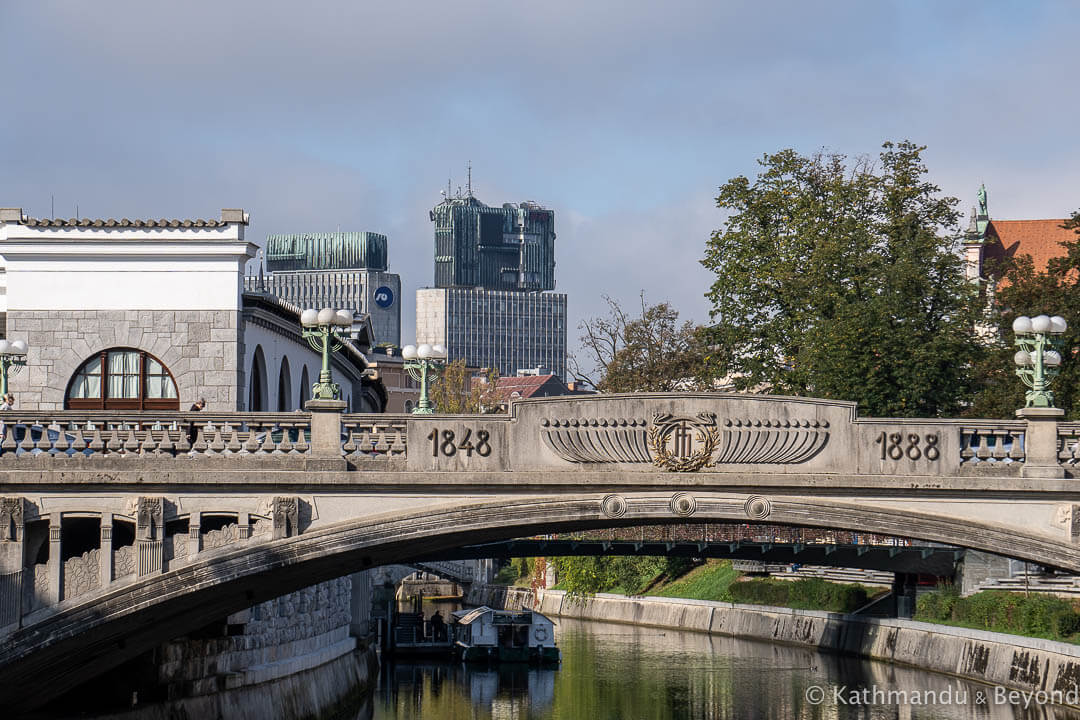
Walking tour of Ljubljana’s alternative attractions
Our Guide to alternative Ljubljana
Republic Square and around
First and foremost, If you are interested in seeing any of the socialist-era housing estates that were constructed post Second World War to elevate Ljubljana’s housing shortage as a result of the conflict then be sure to go into the Tourist Information Centre and ask them for a copy of their Modernist Neighbourhoods of Ljubljana map. It’s a useful publication in English that details the history of each of the estates as well as providing their locations. As the guy in the TIC observed, they don’t hand out many of these leaflets so it’s unlikely that they will ever run out!
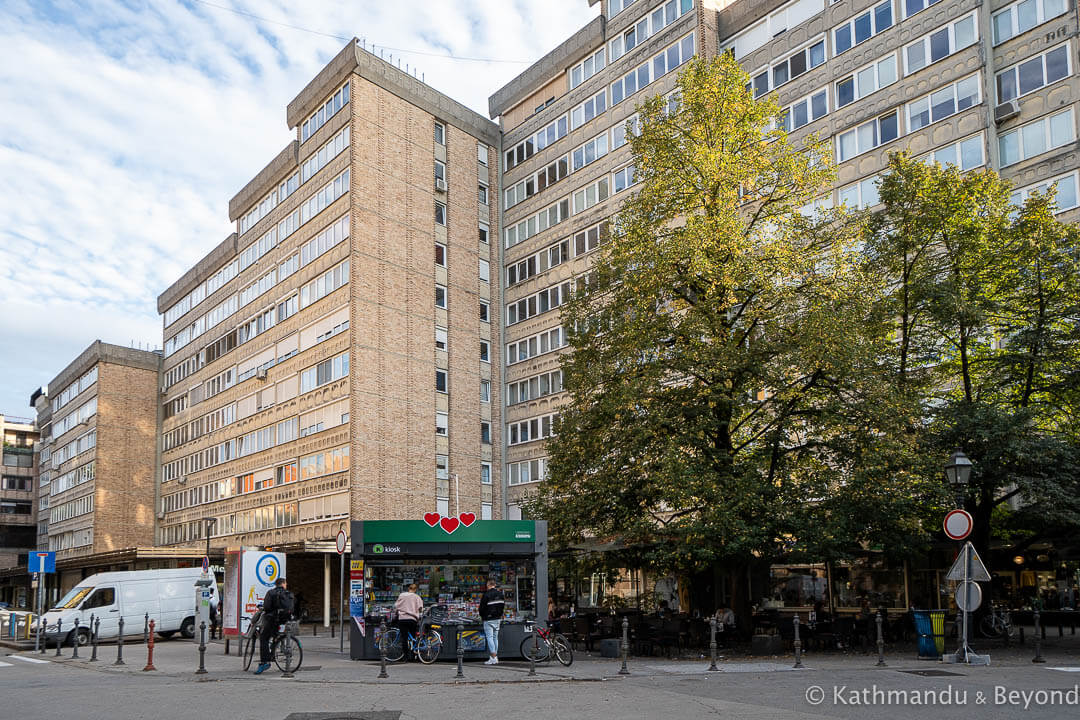
Walking southwest of the Tourist Information Centre, the first stop on our suggested walking tour is one of the city’s socialist-era housing blocks mentioned above. For obvious, town-planning reasons, the majority of the eight estates highlighted on the Modernist Neighbourhoods of Ljubljana map are on the outskirts of the city and not really walkable but two of them can be reached on foot, one of which is called Ferantov VRT. It was initially designed in the mid-1960s and is located on the site of an ancient Roman settlement. While here, check out the 1930s modernist-style Mali Nebotičnik (Little Skyscraper). Edvard Ravnikar (see next paragraph) respected this interwar building so much that he created his new estate around it in order to preserve its glory.
As an aside, the (very central) neighbourhood surrounding Ferantov VRT is a popular student hangout and a good, authentic and cheaper alternative for bars and cafes than the nearby old town.
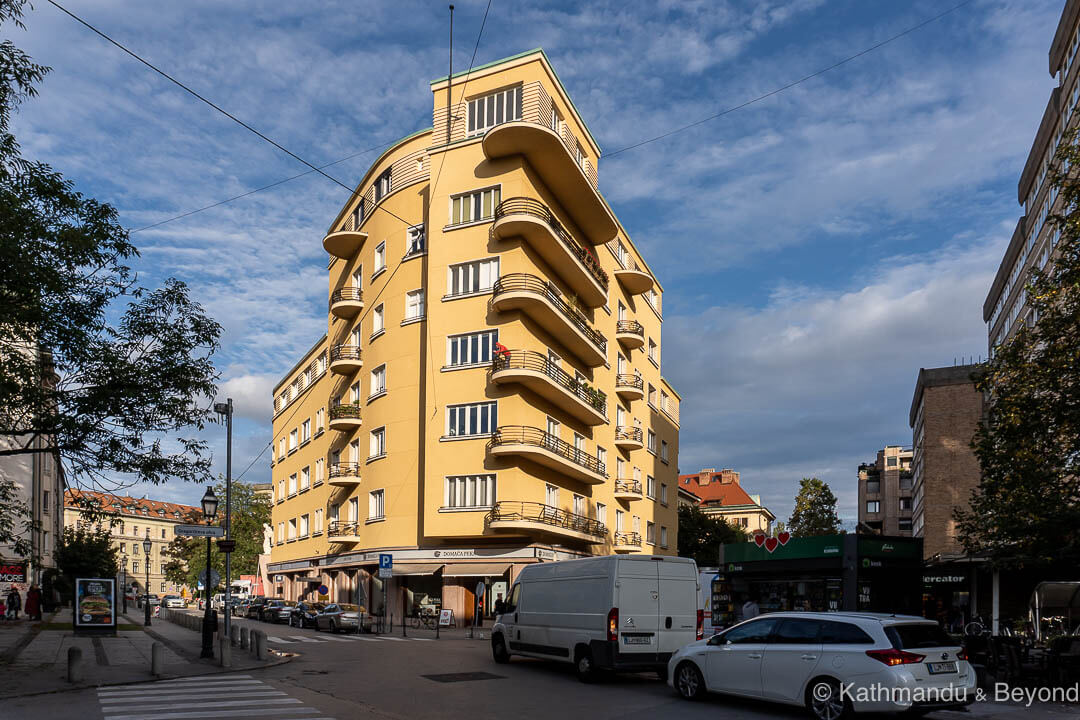
Heading north, stop at the intersection of Slovenska cesta and Subic Street to see the Monument to Franc Rozman Stane, a Second World War Slovenian Partisan commander and national hero, before continuing the short distance to Republic Square. Having just come from the quaintness of the old town, Trg Republike (in Slovene) will smack you in the teeth like a heavyweight boxer gunning for a knockout. Constructed between 1961 and 1982 by a group of designers led by prominent Slovenian architect and Le Corbusier-inspired, Edvard Ravnikar, the square is monumental in its grandeur and was devoid of any other tourists during the three times we visited it. It is dominated by two skyscrapers, the NLB Tower (or TR2 (Trg Republike 2), which is on the left when facing the square, and TR3 (Trg Republike 3) on the opposite side. There are several other structures on the square that, if you are into this sort of thing, will keep you there for at least another hour. To the right of the NLB Tower is the Maximarket and on the other side of the square are two spomeniks. The bigger of the two is the impressive Monument to the Revolution which, at 19 tons, is one of the largest public sculptures in Slovenia. The other is the Monument to Edvard Kardelj, a politician and economist who was one of the leaders of the Liberation Front of the Slovenian People during the Second World War.
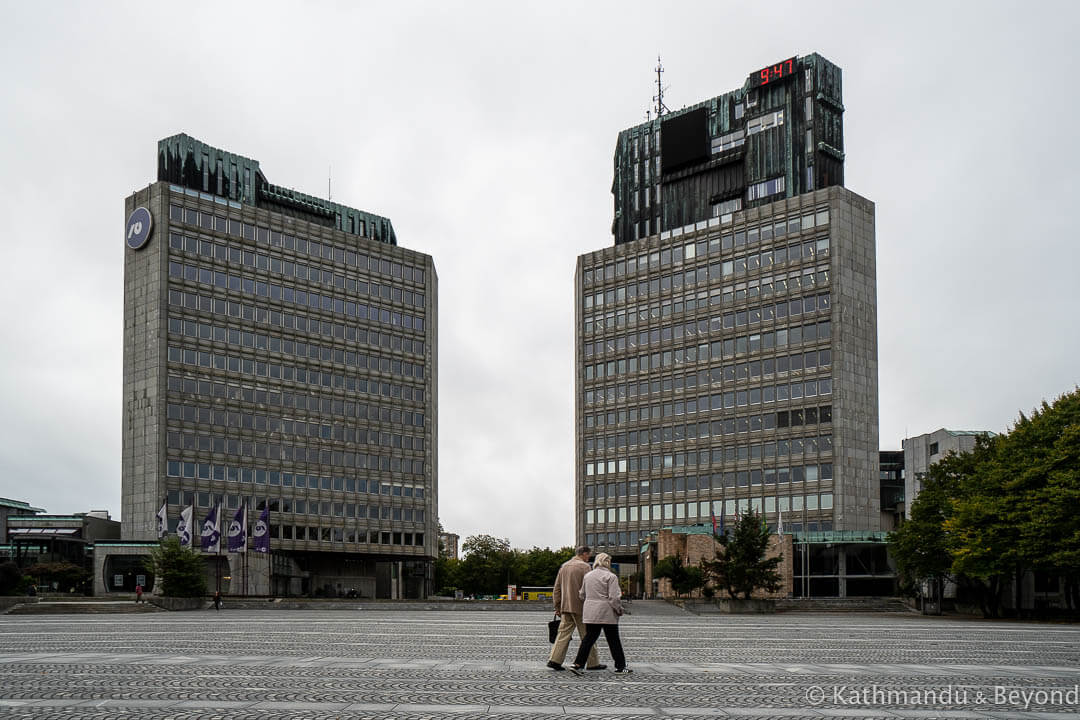
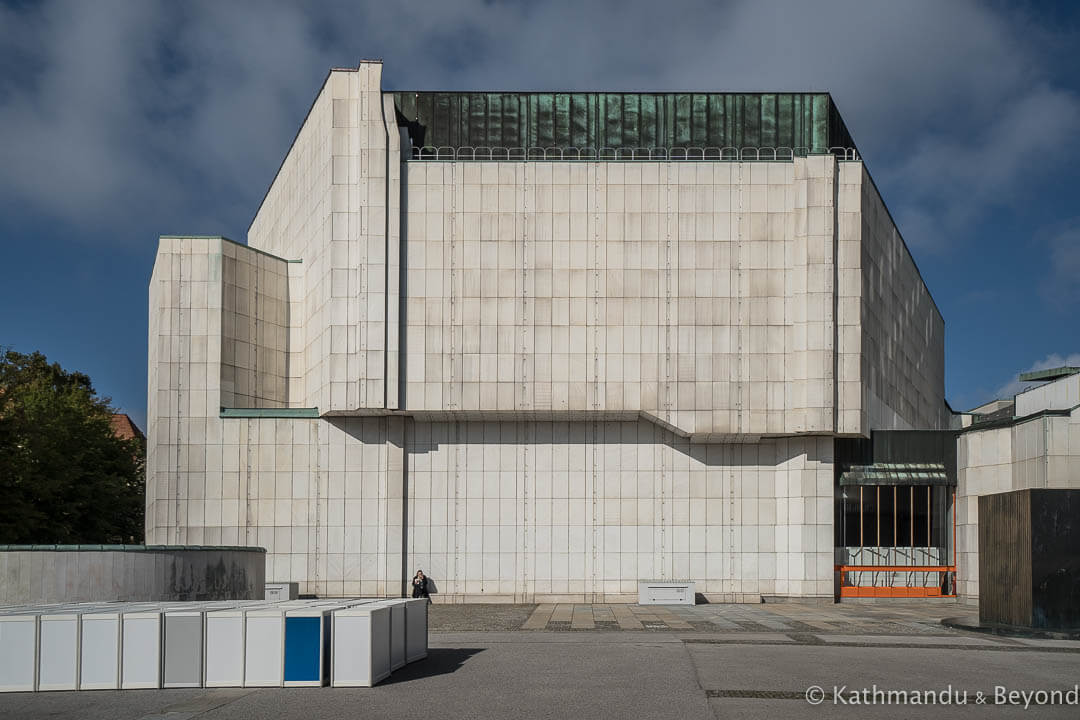
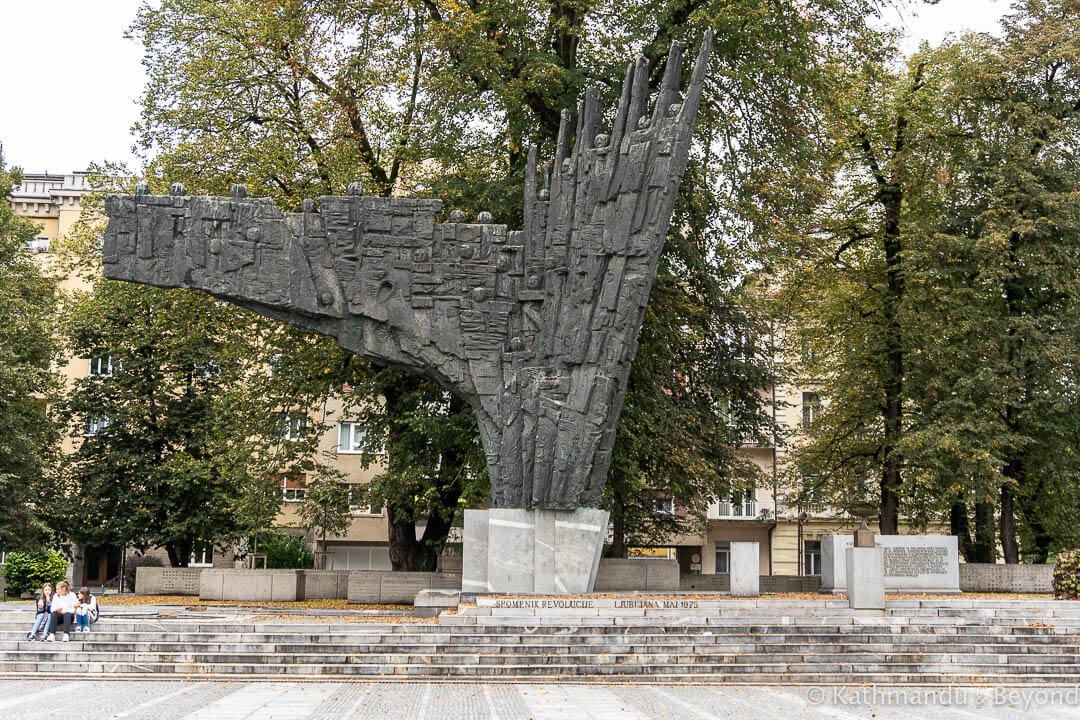
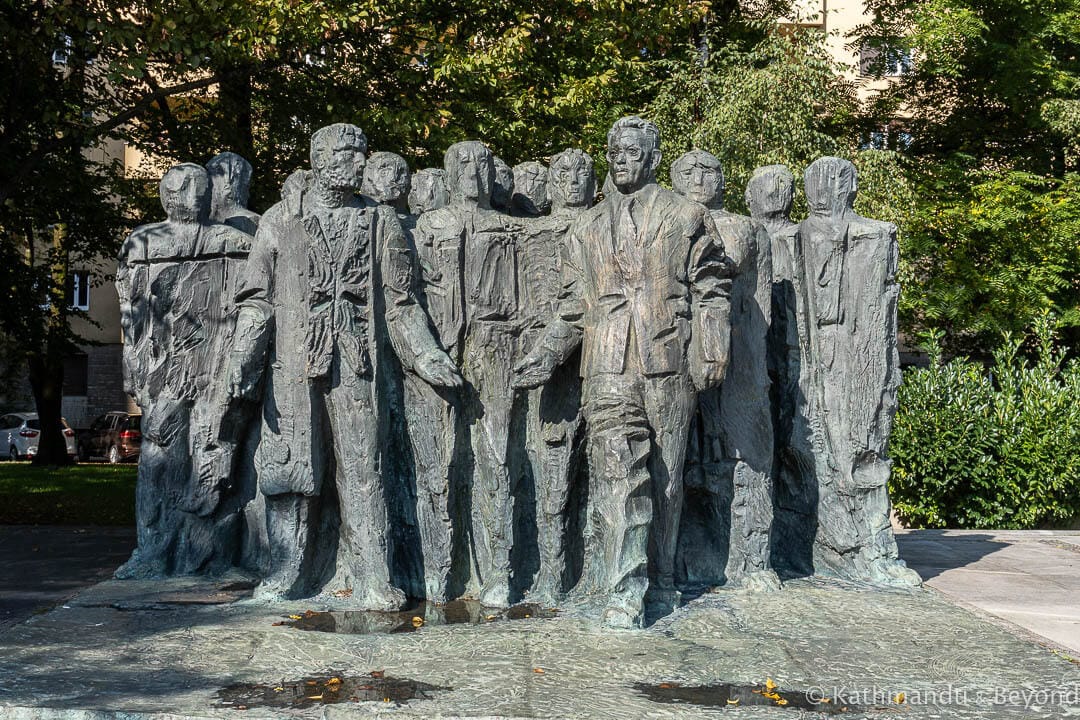
On the other side of the street from the square is the National Assembly Building of Slovenia. Constructed before the square in the 1950s, the most interesting thing to see here is the ornate facade of the building’s main entrance which depicts scenes from everyday life such as children playing, family togetherness and manual labour etc. Why everyone in the scene is in the nude is something I cannot fathom! The two guys covering their modesty with a chainsaw (top row, towards the right) is a particular favourite – they want to be careful what they do with that!
Before leaving the square, it is worth heading to the backside of it. The perspective is very different, plus this is the location of the very modernist Cankar Centre, Slovenia’s largest convention and cultural hall.
Moving away from the square, in front of the Cankar Centre there is a monument commemorating Boris Kidrič, another Second World War partisan and a key player in the organisation of the Slovene resistance against occupation by Nazi Germany and Fascist Italy.
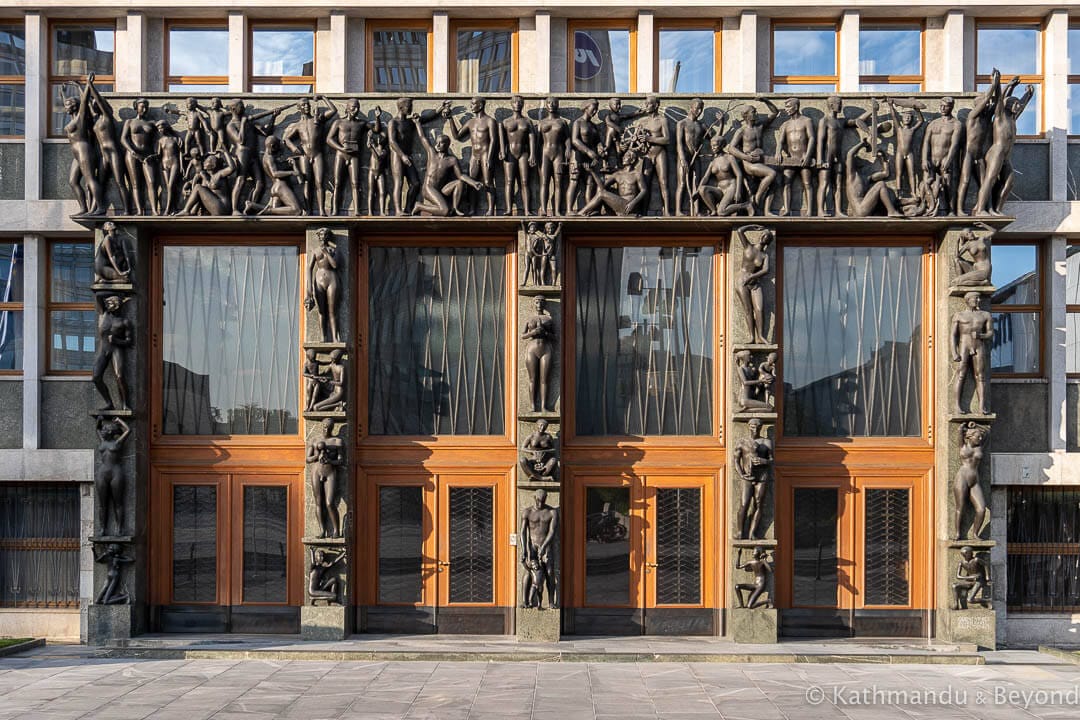
Tivoli Park and around
Continuing west, Ljubljana’s largest green space, Tivoli Park, is next on the agenda. If you enter via its southern entrance, you’ll see a rather homoerotic Second World War-related statue of a man shedding his shirt and displaying his chest. It is entitled Monument for the Hostages in Rožna Dolina. Rožna Dolina used to be a former independent settlement in the southwest part of Ljubljana that is nowadays a part of the city proper. Heading across to the other side of the park, next up is the National Museum of Contemporary History. Given it was formerly called the Museum of National Liberation and then the Museum of the People’s Revolution, combined with the fact that it documents the two World Wars, the period between them, the country’s socialist era and also the build-up to, and formation of, the new Slovene state, it will definitely be of interest to anyone following this route. However, if you are undertaking this circuit to the letter then, like us, you probably won’t have time to squeeze in a visit on the same day and so it is best to skip it in favour of returning at another time. Instead, and for a quick dose of socialist realism, check out the nearby Monument to Miners before heading back into the park to take a look at the now-abandoned Bellevue Hotel. Dating back to 1909, this country-estate style hotel was nationalised in 1953 and then denationalised again after Slovenia gained independence in 1991. It is now in a wretched state of disrepair and there is very little to see. There is a fence around the perimeter but it is still possible to get inside if you are determined enough. But, in all honesty, it probably isn’t worth the effort as a couple of fires, with the most recent being in 2014, have ensured that the interior of the building is fairly gutted.
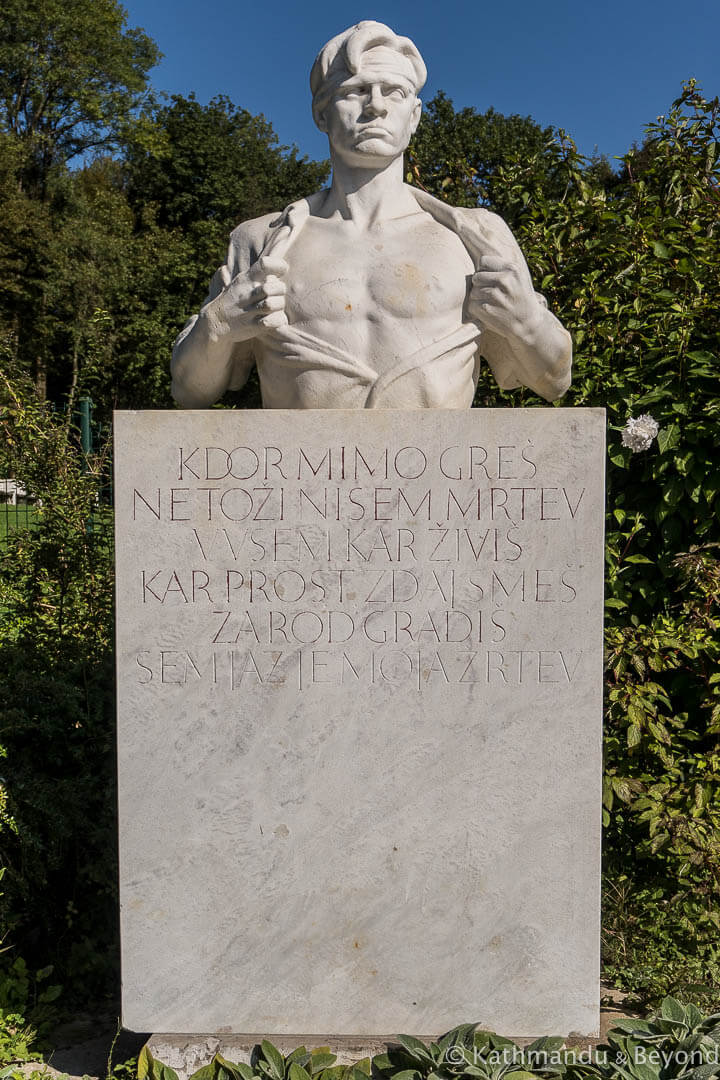
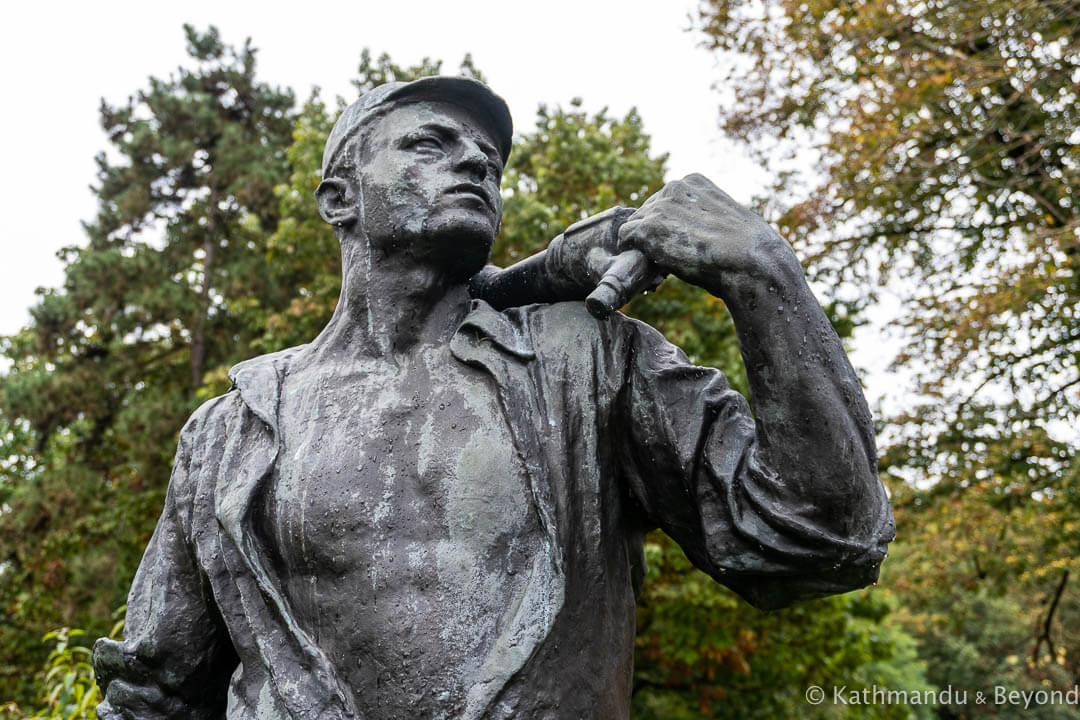
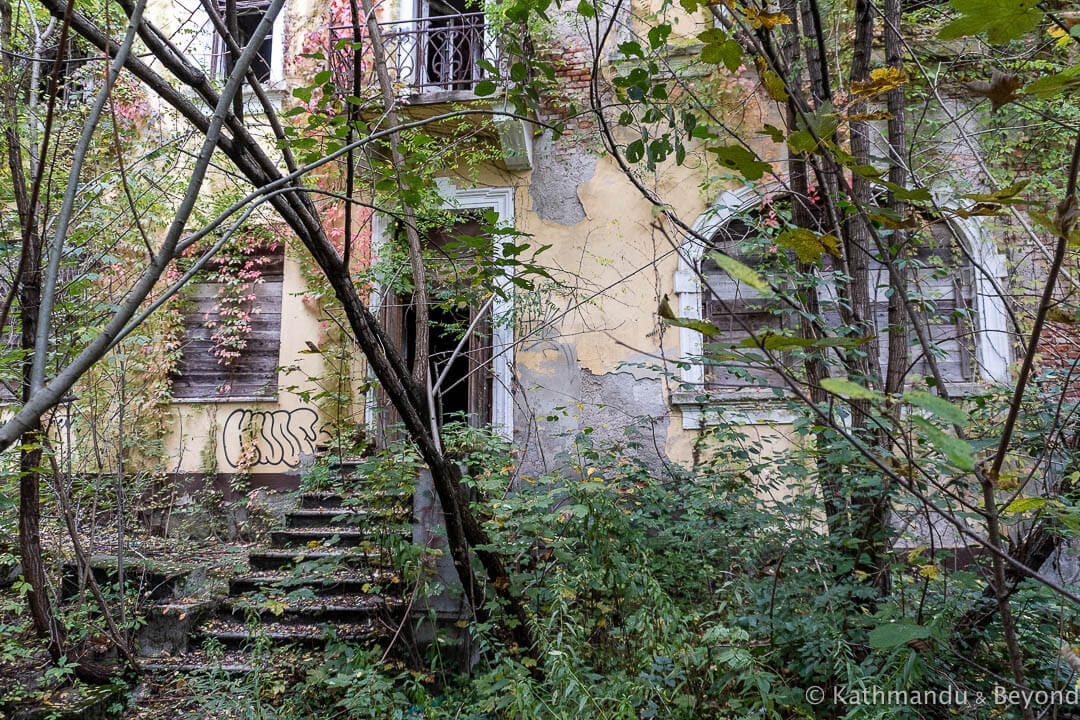
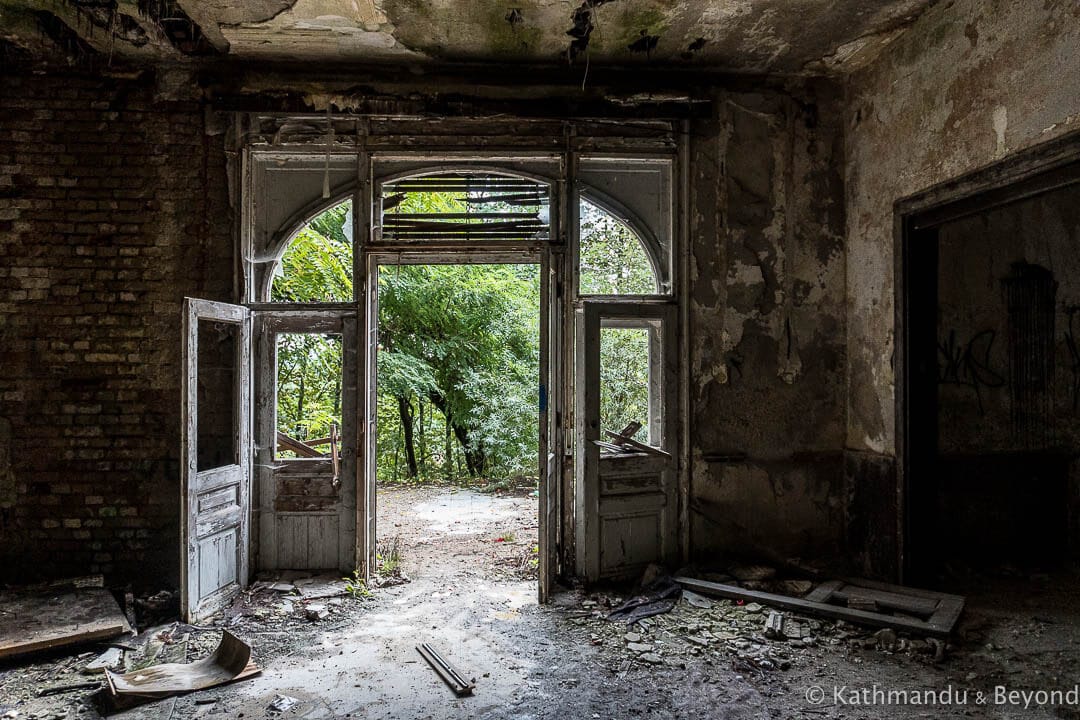
Heading back east, in the direction of the railway station, the only thing that we saw of interest for next couple of kilometres and before reaching Dunajska cesta (Vienna Road) was a former petrol station that is now used as a parking forecourt. It was designed by distinguished Slovenian architect and urban planner, Milan Mihelič, in 1968 and is an excellent example of modernist architecture. Stupidly, and we are still kicking ourselves (very hard!), we didn’t take one photograph of the structure even though we walked past and commented on it. Don’t ask why, sometimes we just have a funny five minutes but it annoys me no end so if anyone does go and see it and takes a photo, please send us a copy to include in this blog!
Heading up Dunajska cesta, there are a couple of eye-catching buildings worth stopping for, including the Ljubljana Exhibition and Convention Centre, a large, gold-coloured building which belongs to the Slovenian insurance company, Triglav, and a socialist-era apartment building with an attractive blue facade.
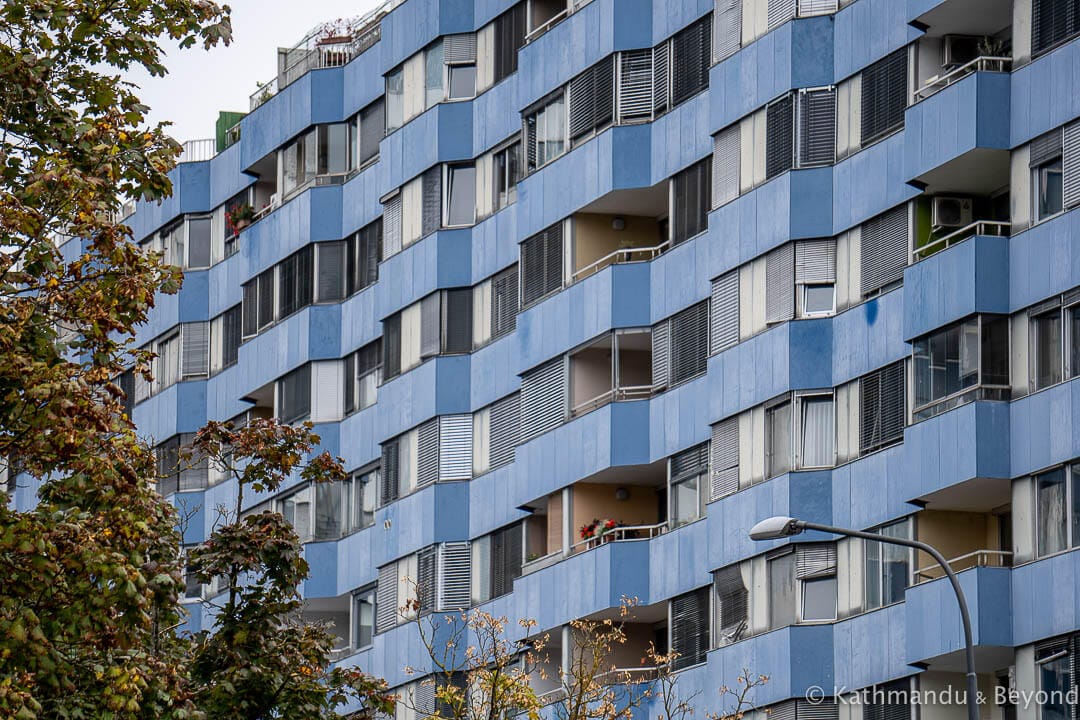
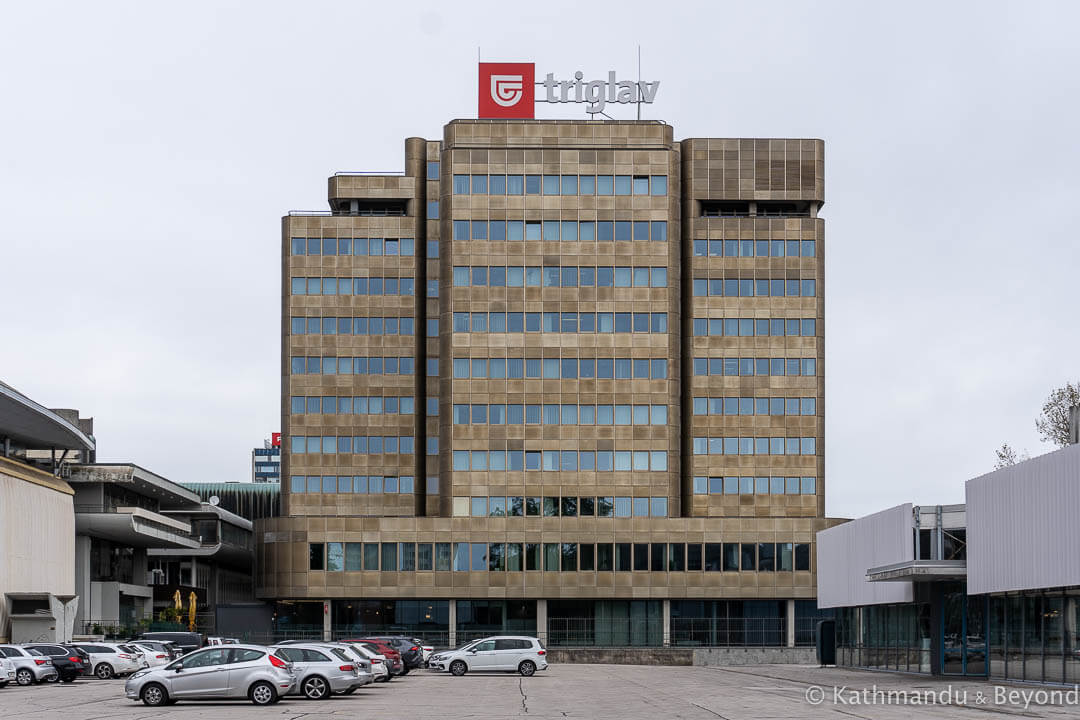
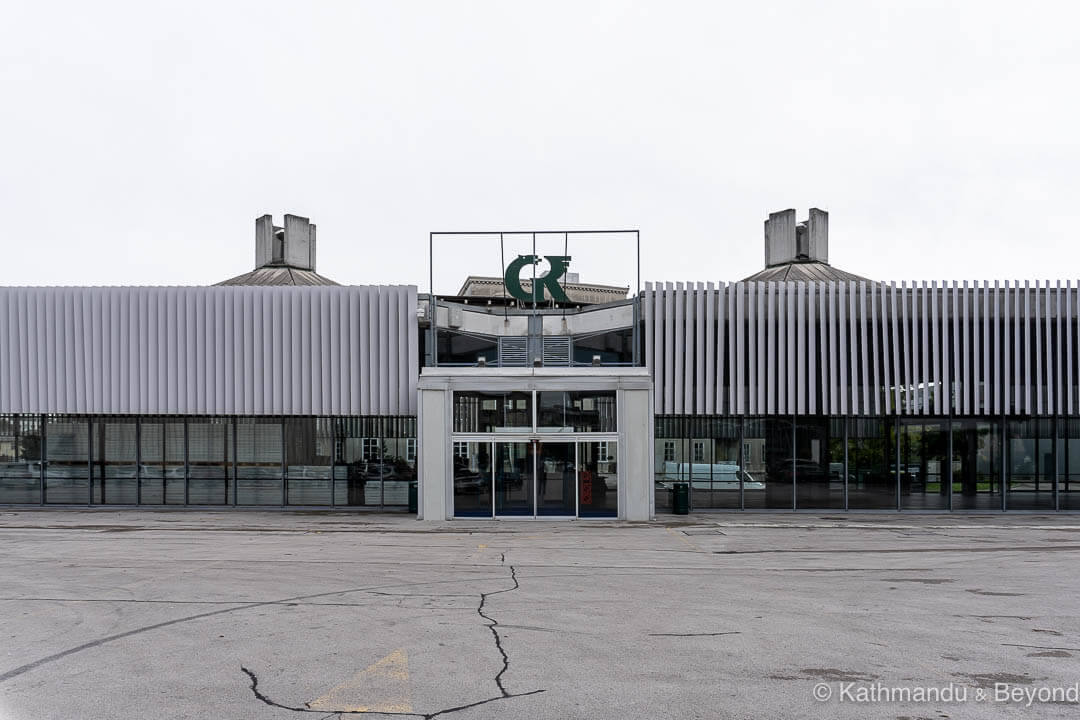
Žale Cemetery and around
When you reach the Triglav building, you could speed up the next part of the journey by taking a bus along Linhartova cesta (Linhart Street) to Žale Cemetery. If you do decide to walk the 1.6kms, however, then you will pass by the second socialist-era housing block that is walkable from the centre of the city. Called Savsko Naselje, it was the first post-war housing development to be established during the socialist period and was constructed in the late 1950s/early 1960s using various contractors including the Yugoslav Army. The original buildings were single-storey houses with brick woodsheds attached and the tower blocks seen in the photo weren’t added until the 1960s. It is still a popular place to live because the area around the neighbourhood is considered to be one of the greenest parts of the city, plus it is close to the centre.
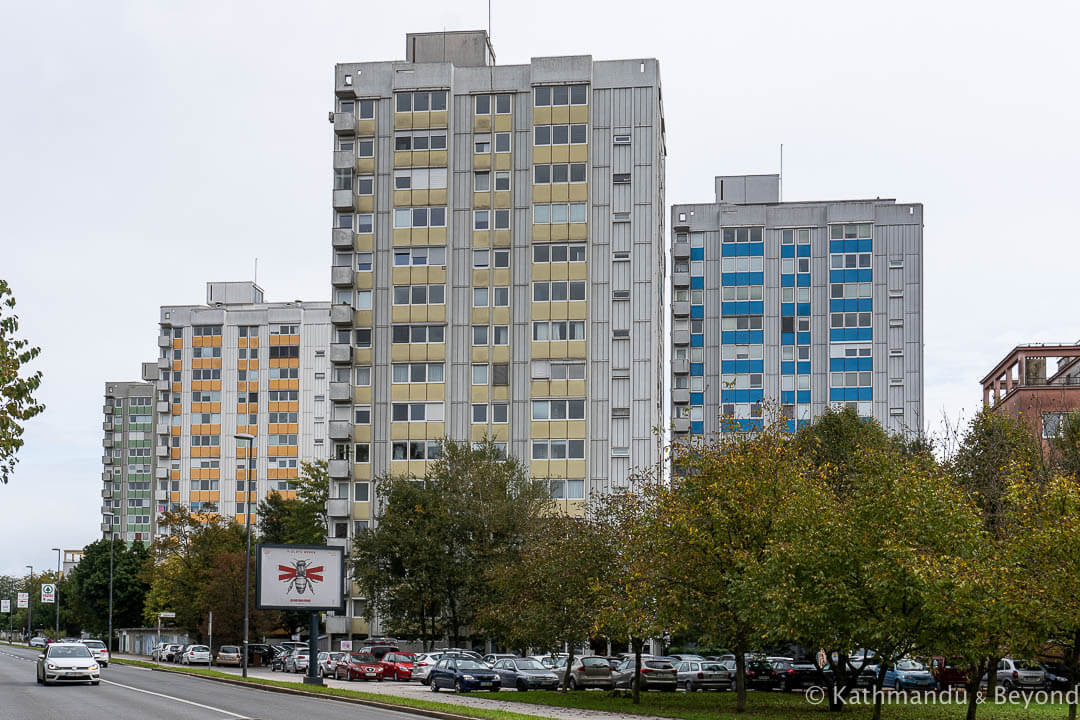
Žale Cemetery is Ljubljana’s largest and most important graveyard. Surprisingly, it only dates back to 1906 (the original boneyard is behind Holy Cross Church) and wasn’t expanded into a major cemetery until the mid-1930s, leading into the early 1940s. Žale is one of the city’s highlights in our opinion and you can easily spend three to four hours wandering around and discovering the different sections. We specifically wanted to see the World War I Ossuary as well as the Monument to the National Liberation War, which depicts prisoners of war behind a barbwire fence. But, other places of note included the impressive main entrance, All Saints Church, the brutalist-style Funeral Hall and the Monument to the Sons of Russia and the Soviet Union Falling in both World Wars, which was erected in 2016 and sits right next to the Monument to the National Liberation War. Another part of the cemetery that was of interest was the Egyptian-inspired New Žale, which was designed by another of Slovenia’s most important postwar architects, Marko Mušič. In this section are the graves of, and a memorial to, those who perished in the Ten-Day War/Slovenian Independence War, which lasted from 27 June until 7 July 1991 and marked the beginning of the Yugoslav Wars.
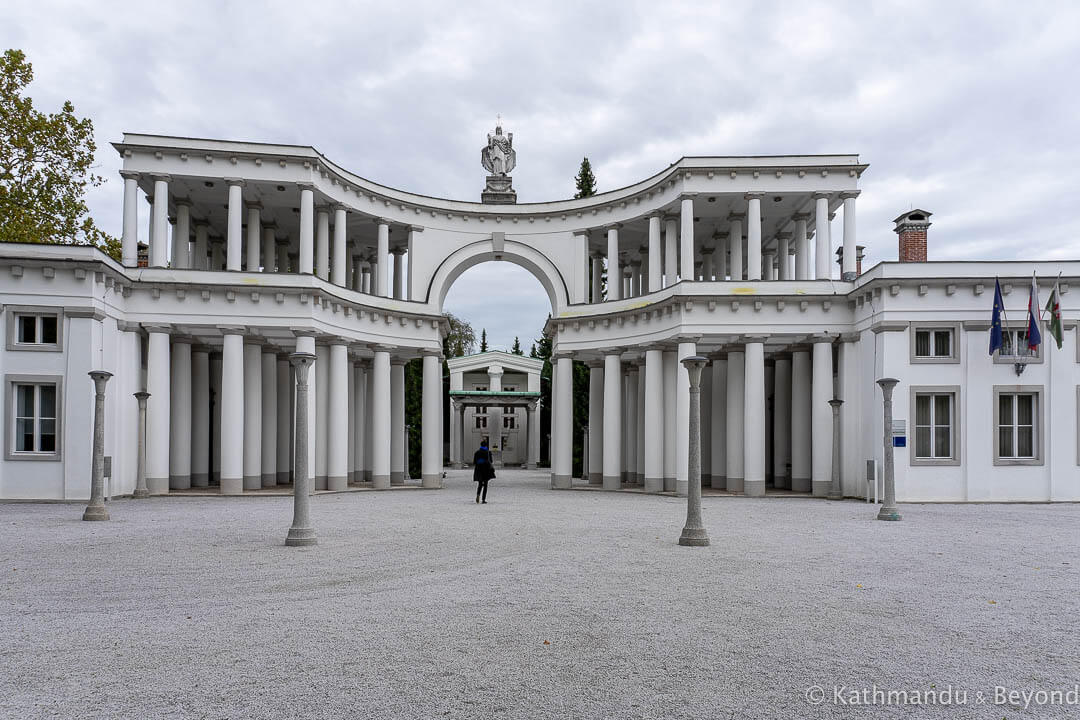
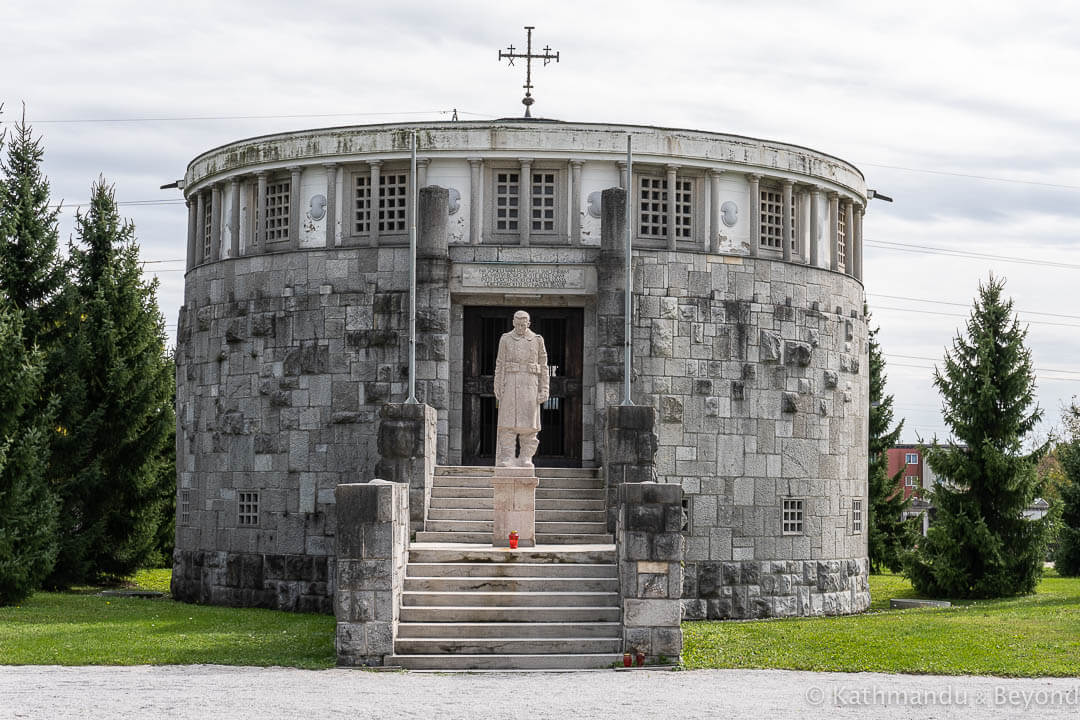
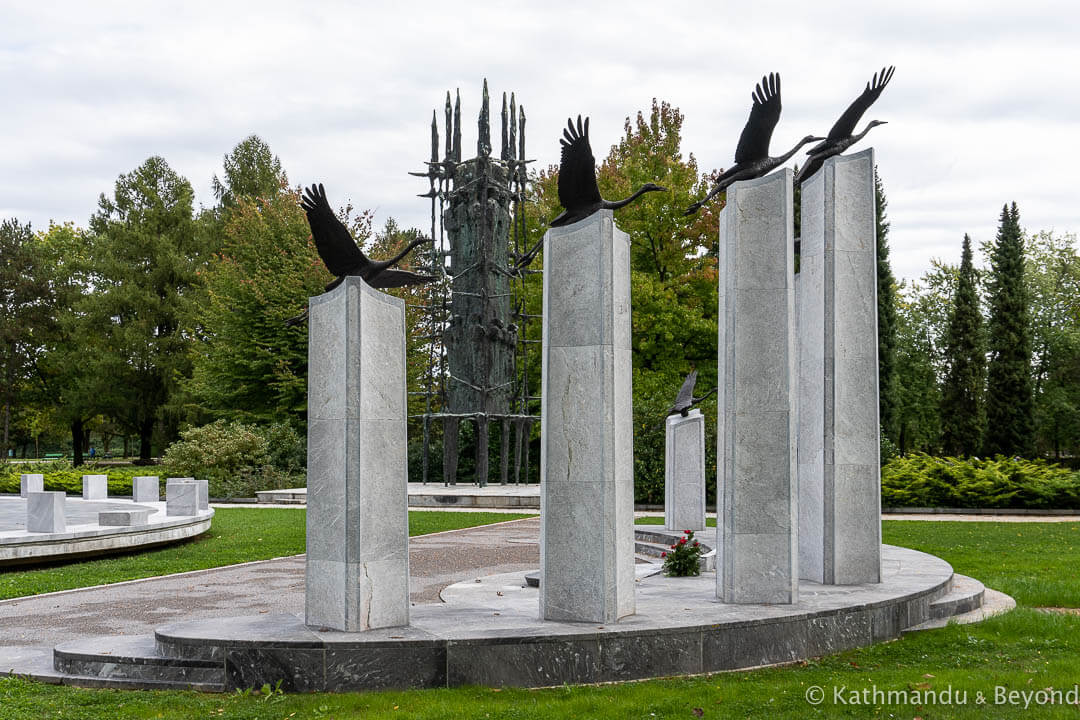
Ljubljana Railway Station and around
Leaving Žale Cemetery you need to head back in the general direction of the railway station and the centre of the city once more. On the north side of the tracks is a striking new building that looks like a large chunk of multi-coloured Toblerone chocolate. As far as I can make out, it’s simply called R5 Residential Building and it was erected in 2009. When you’re done admiring it, walk under the train tracks via the nearby underpass and then east to the first of Ljubljana’s concentrated street art areas. Similar to Christiania in Copenhagen, but on a smaller scale, Metelkova is a former military barracks (it served as the headquarters of the Army of the Austro-Hungarian Empire and then the Slovenian headquarter of the Yugoslav National Army) that has become an autonomous region and squat that is located on the edge of the city centre. Most of the buildings within the compound are covered with murals and graffiti and there is a coffee shop and bar on site should you wish to linger longer than it takes to admire the art.
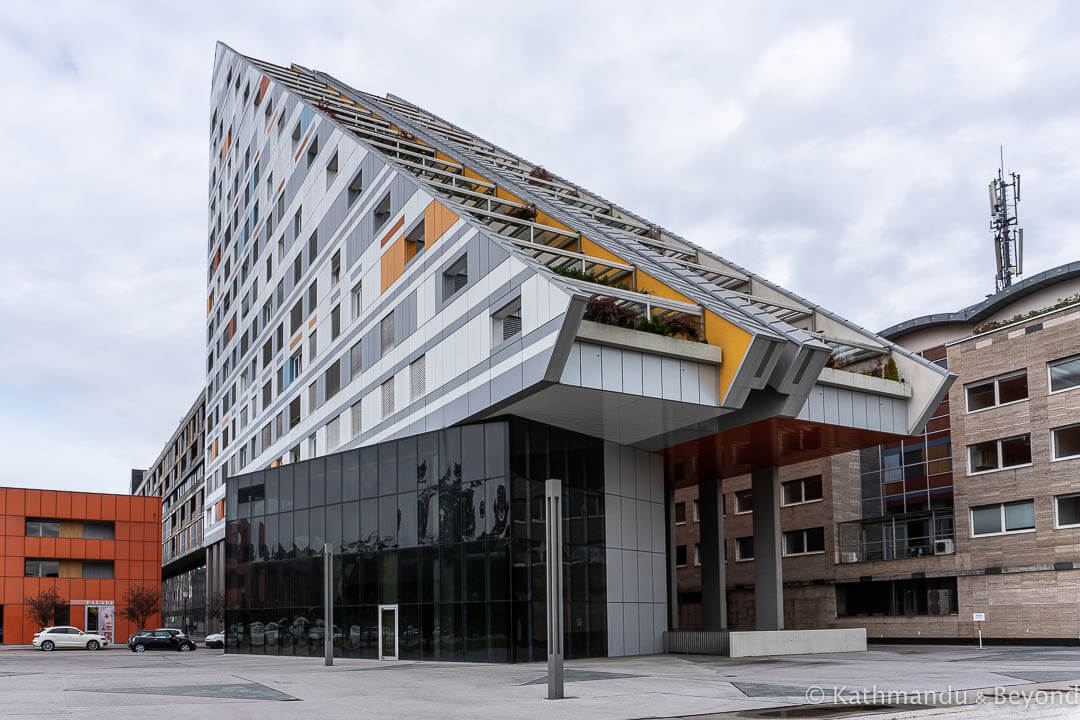
Metelkova reportedly dates back to 25 June 1991, the date Slovenia declared its independence, whereas Rog, another street-art adorned squat that was once a factory that manufactured Rog bicycles, was first occupied in 2006 despite the fact that the building had been abandoned since 1991. Unlike Metelkova, which was controversially declared a national cultural heritage site in 2005 and also received financial support from the European Cultural Fund, Rog is cited for demolition, although the decision to carry it out has been suspended and is currently being resolved through the Slovenian judiciary system. Some of the best street art at Rog is tucked away, around the back of the main building. You might get asked to make a financial donation, as we were, by some of the community if they see you taking photos. The donation box is near the main entrance.
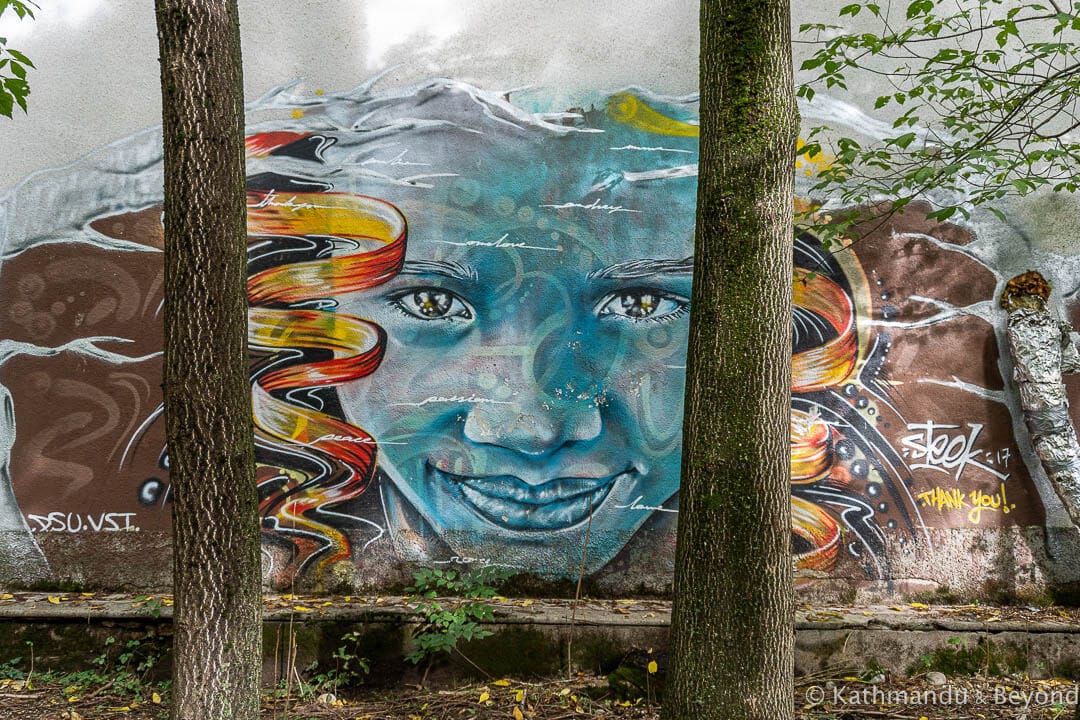
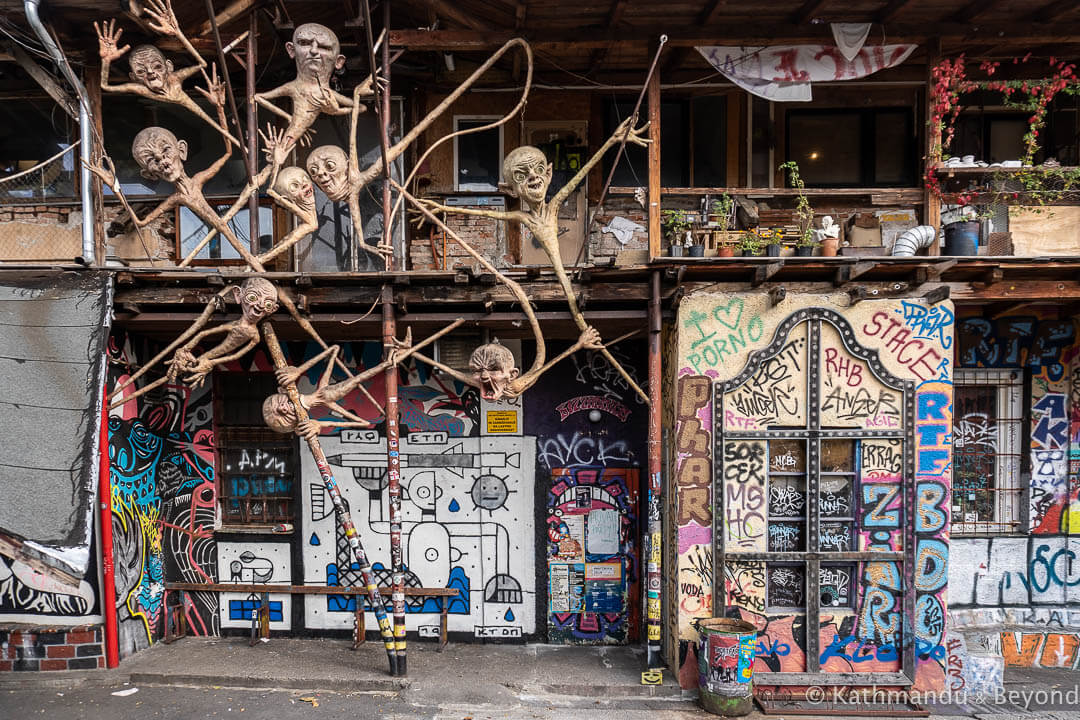
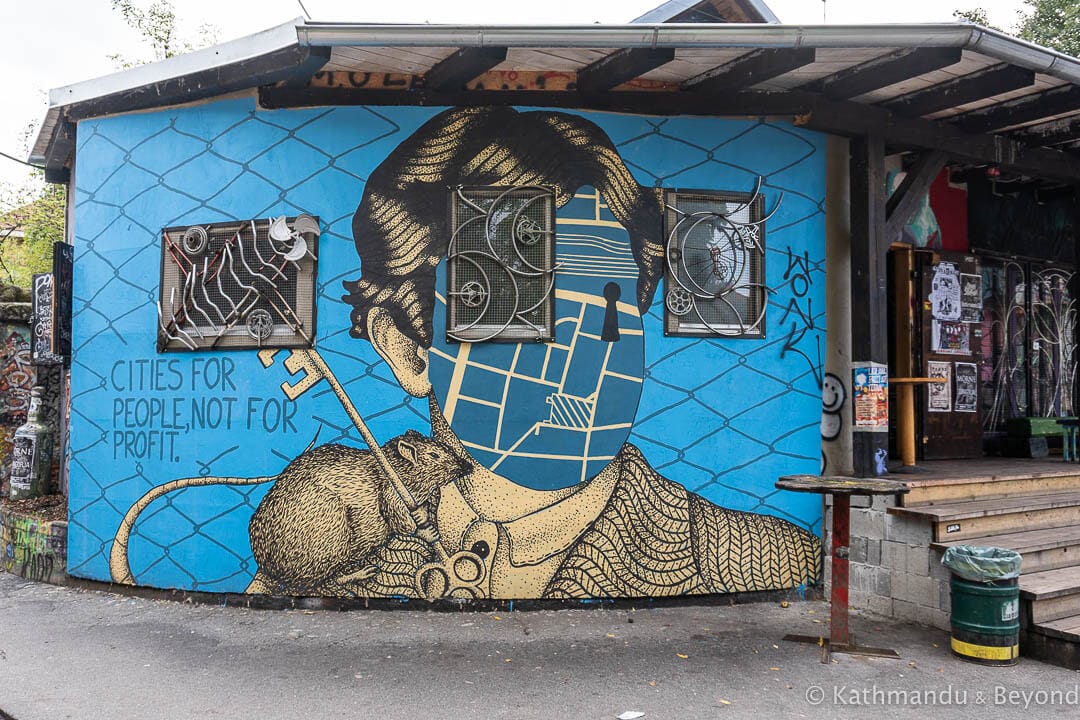
Crisscrossing the old town, there are two more areas worth checking out before calling it a day. The first of these is the Central Hotel and the adjacent block. The porthole-like facade of the Central Hotel is the reason to stop and check it out and over the road are two fine examples of bas relief above the main entrance of the Health Insurance Institute of Slovenia building. They are entitled “Work” and “Health Care” and were created in 1923 by artist, Lojze Dolinar. There is also a monolithic spomenik in the vicinity that commentates women and antifascism. According to the staff in the tourist board, one of the buildings near the memorial was a prison during the Second World War and on 1 August 1943, numerous wives of men incarcerated in the prison demonstrated for their release. Unfortunately, that’s all I can find out about the story. I can’t figure out if the women were punished, i.e. shot, for their protest or if the monument simply commemorates their bravery for standing up to the fascists. Slovenia was occupied by Nazi Germany at the time so I’m assuming the former.
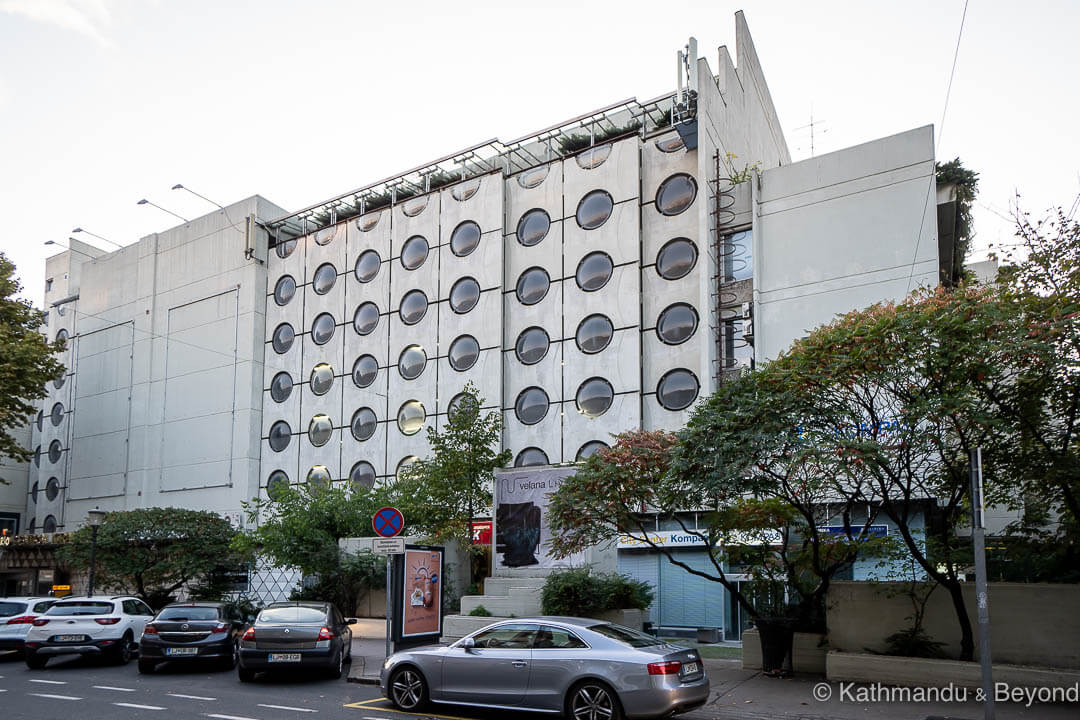
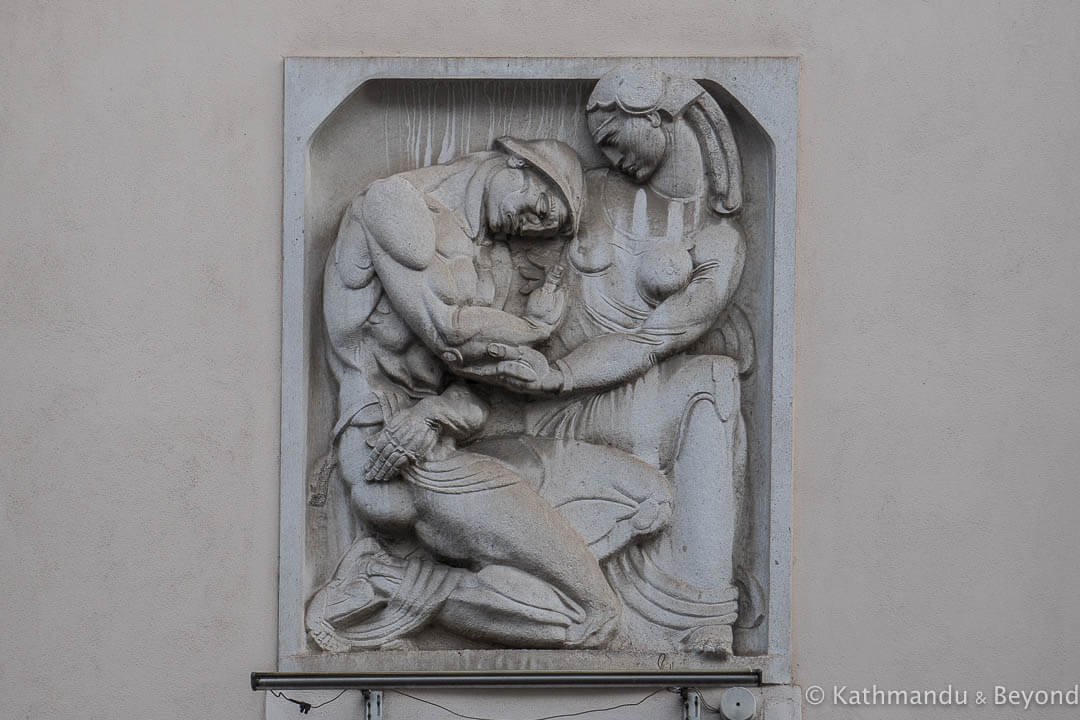
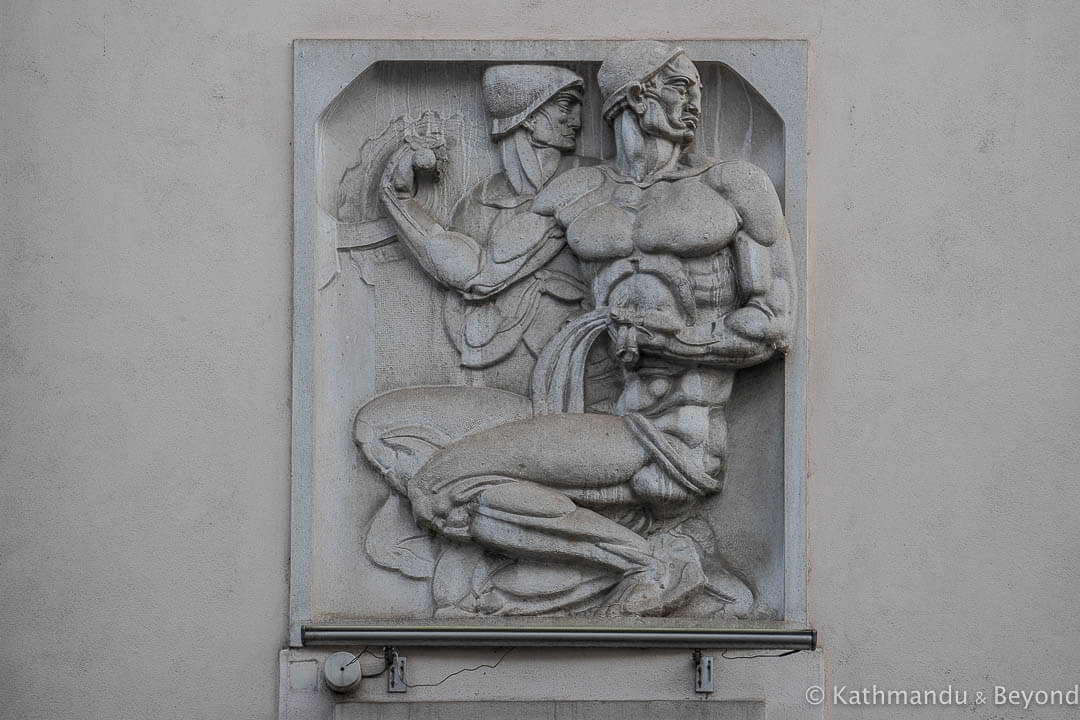
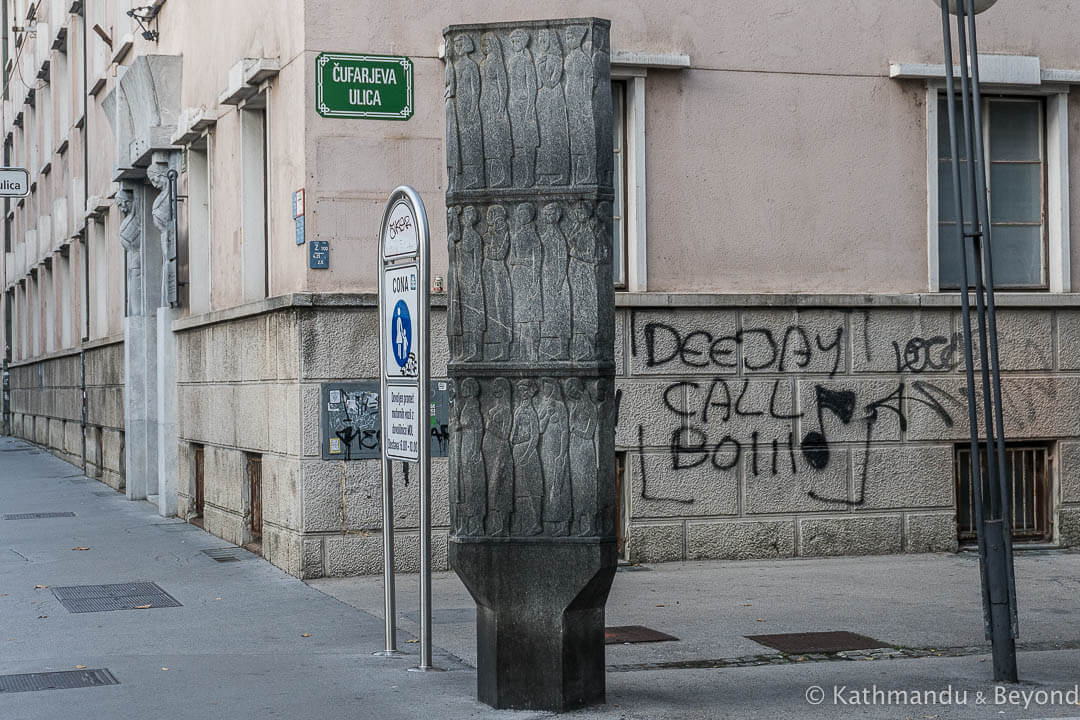
The reason why I’ve left the Art Nouveau Krisperjrva Hisa (Crisper House), the 1960s Metalka building and the city’s cyanometer (an instrument for measuring the ‘blueness’ of the sky in order to predict the weather) until last is because over the road is the Nebotičnik building and right at the top of it is a cafe/bar which has an outdoor terrace and terrific views across the city. Without question, if you’ve managed to follow this route in one day then you deserve a beer or two and this is as good a place as any to have one. But, also, and assuming a sunny day, if you head up there in the late afternoon/early evening then, the light over the castle and the old town is perfect and ideal for photography. The drinks are reasonably priced but equally, the staff don’t seem to mind, or rather they don’t notice because they are busy, people just coming up for the view and not purchasing anything.
Depending on how many beers you have at the Nebotičnik cafe, from this point it’s only a hop, skip and a jump or, alternatively, a slow stagger back to the old town and the end of our suggested alternative Ljubljana walking tour.
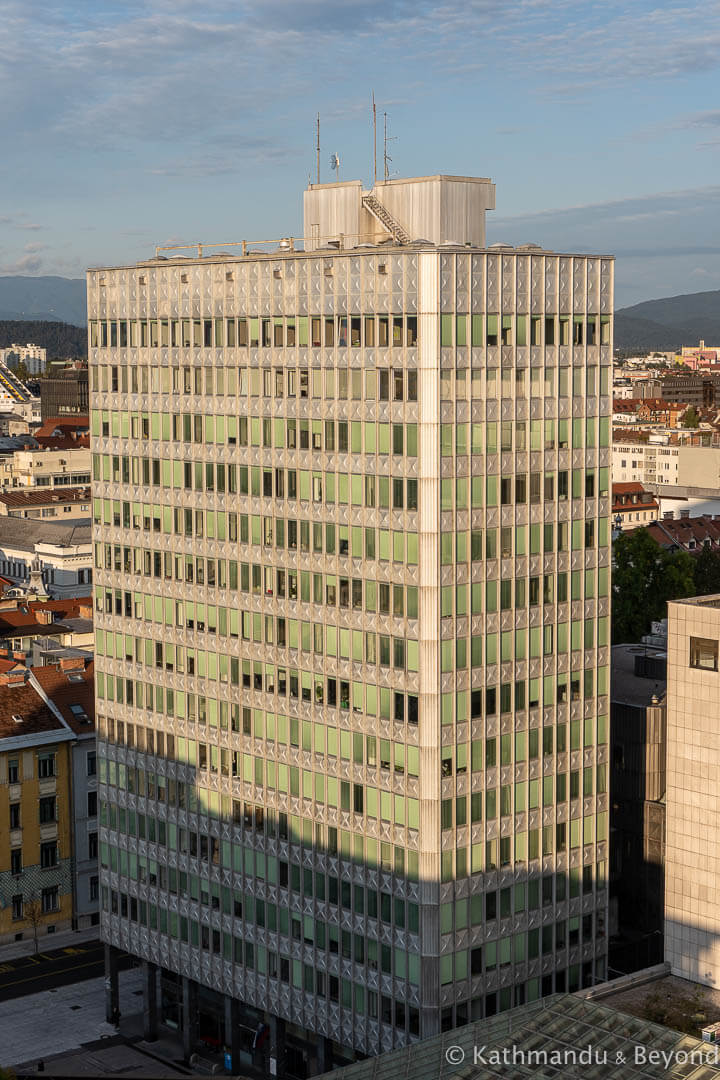
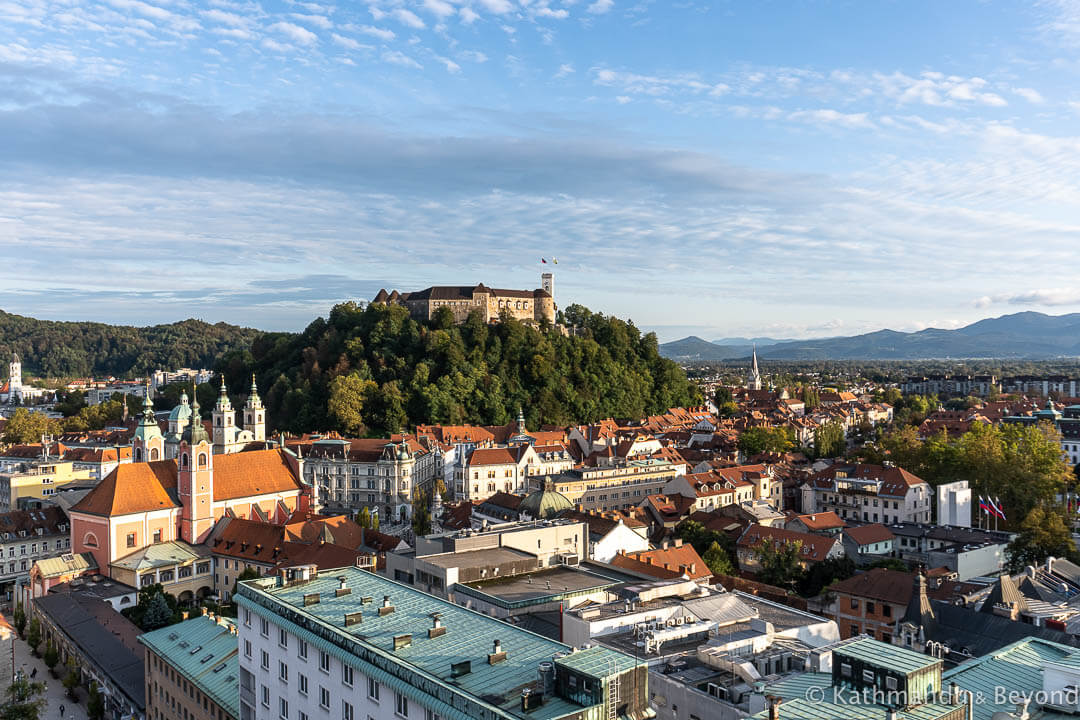
Have we inspired you to explore an alternative Ljubljana? Pin this post to your travel boards…
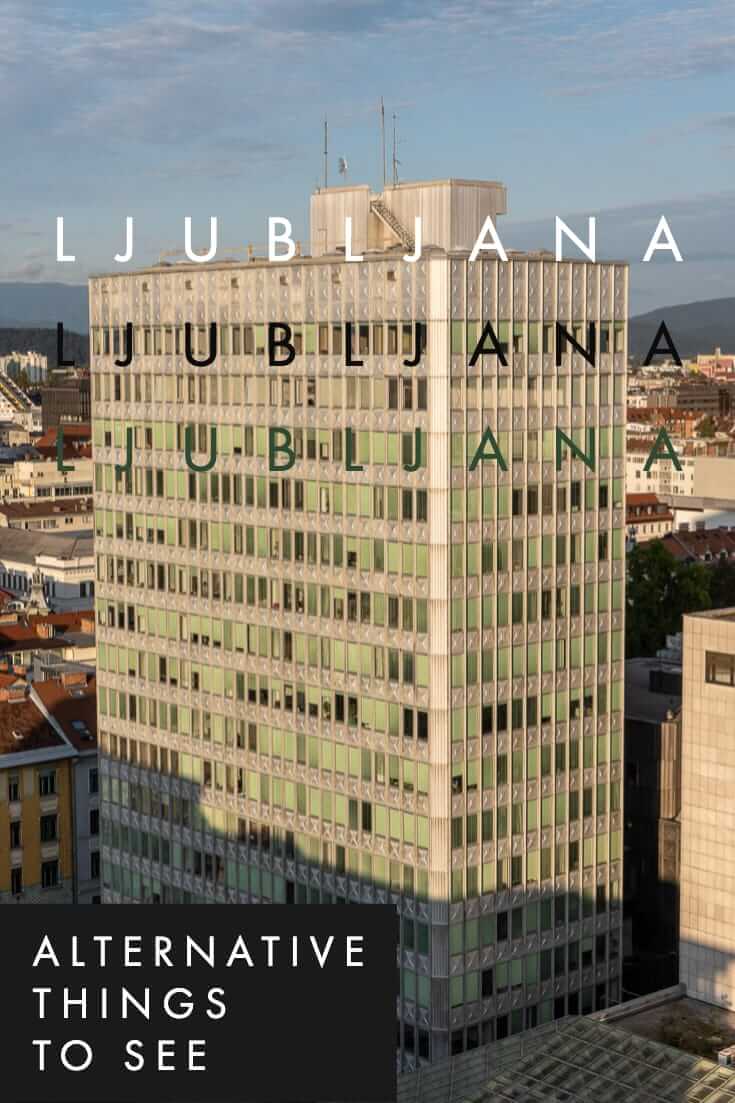
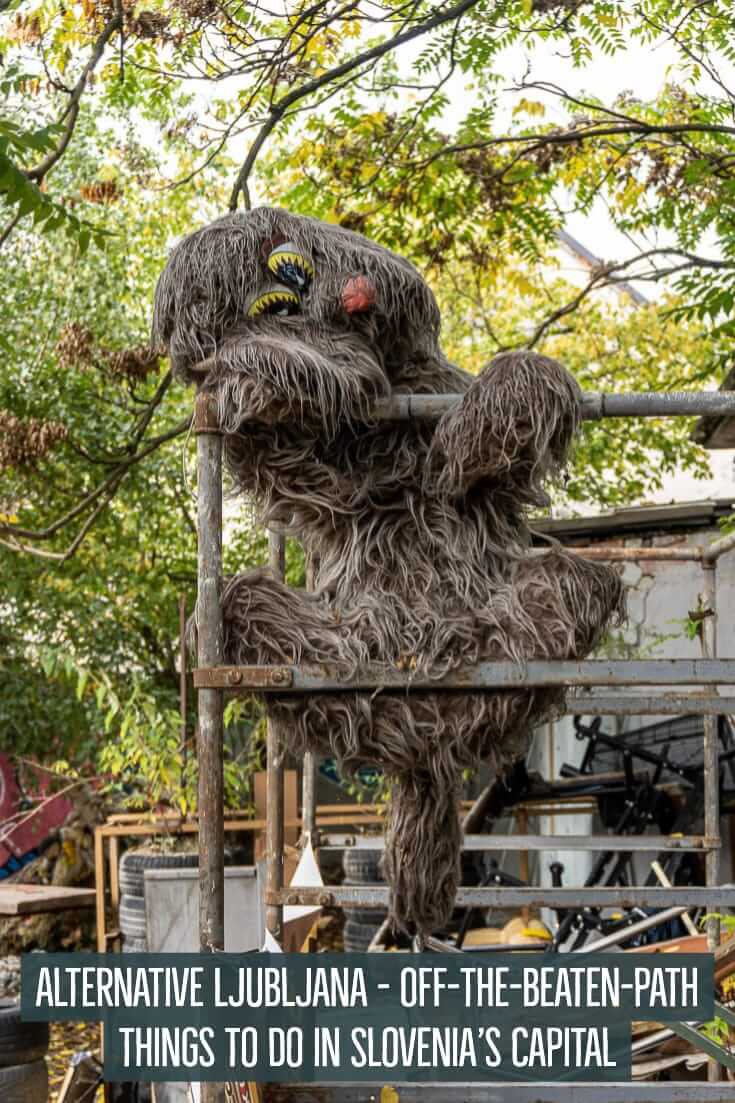
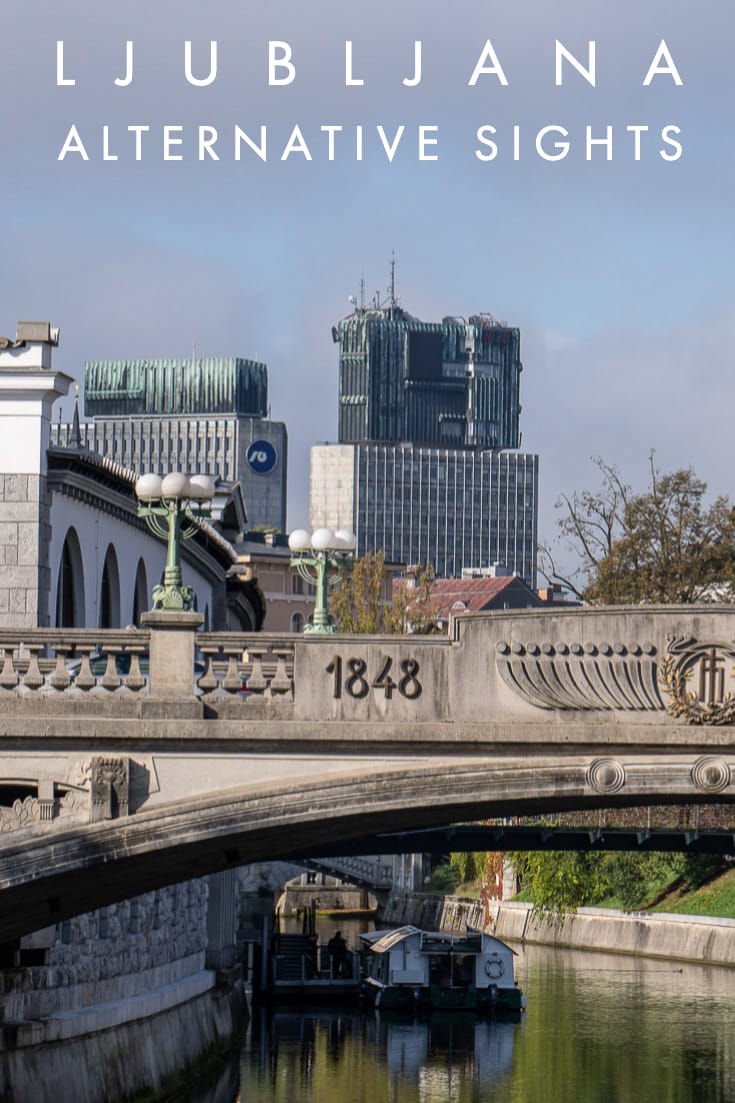

Great stuff! Lots of ideas for when I next find myself in Ljubljana.
Excellent! Glad the post will come in useful in the future!